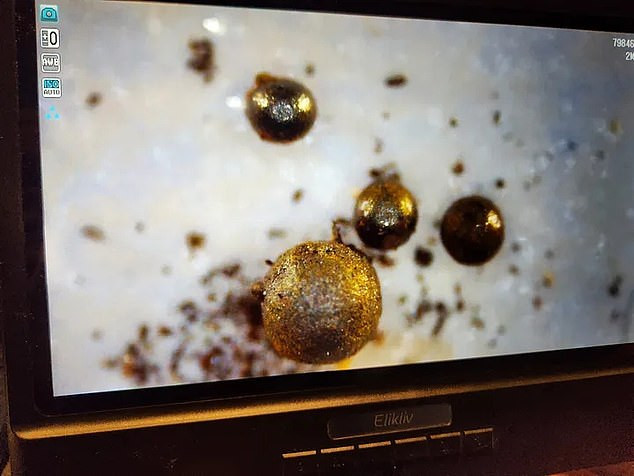Unidentified object codenamed ‘IM1’ crashed in Pacific Ocean in 2014 – Further tests needed to explain how it withstood four times the pressure that crashed the Titan submarine
It was discovered “interstellar spaceship”? Harvard scientists have reported that debris from an unidentified object that crashed into the Pacific Ocean in 2014 appears to be of “artificial origin”, believing it could be the remains of an “interstellar spacecraft”. These are metal fragments analyzed in a Berkeley laboratory.
The Harvard team now has more evidence that the unknown object, codenamed ‘IM1’, originated outside our solar system.
Further tests are needed to explain how IM1 withstood more than 200 megapascals, four times the pressure that crushed OceanGate’s Titan submarine in the depths of the Atlantic near the Titanic.
Harvard and Pentagon scientists argue that alien “motherships” they could fly through our solar system — undetected by the James Webb Space Telescope.
Two Harvard scientists discovered 50 unusual iron spheres after locating IM1, the unidentified object, off the coast of Papua New Guinea last week as part of a $1.5 million underwater search mission.
New laboratory analysis of the metallic spheres reveals that they are “anomalous” and more durable than any observed naturally-produced meteorite, according to Professor Avi Loeb, the former chairman of Harvard’s astronomy department who led the research. Professor Loeb – who has been dubbed ‘Harvard’s alien hunter’ – told DailyMail.com: “This composition is ‘anomalous’ compared to man-made alloys, known asteroids and known astrophysical sources.”
But NASA also says that IM1 “almost certainly” came from space – making it the first known interstellar “visitor” to Earth.
The Harvard scientific “duo” not only claim that IM1 was of “artificial origin”, but also refused to rule out that it was parts of an “interstellar spacecraft” made by aliens.
IM1 withstood four times the pressure that would normally destroy an ordinary iron-metal meteorite – while hurtling through Earth’s atmosphere at 100,215 miles per hour.
Iron is already the main ingredient in the hardest known types of natural meteorites, so the Harvard duo reasoned that there must be something very unusual about how the object was made.
Professor Loeb reported that: “more than 95% of all meteorites contain iron-nickel metal,” he added. “As a consequence, meteorites have concentrations of nickel far greater than those of almost any terrestrial rock.”
However, unlike these typical iron-nickel meteorites, fragments of IM1 contained only “negligible” amounts of nickel, along with other “trace elements,” according to a preliminary statement given to DailyMail.com over the weekend. trace elements, in this type of scientific analysis, means any chemical compound or atomic element present only in extremely small amounts, less than 100 parts per million.
“The fundamental question is whether the meteorite was of natural or technological origin,” emphasizes Professor Loeb. “We hope to answer this question with further analysis of its isotopic composition and radioactive dating.”
But IM1 was not the only object Siraj and Professor Loeb discovered that showed an interstellar orbit. Professor Loeb said that either IM1 or the second object, IM2, the third most powerful meteorite in NASA’s CNEOS catalogue, may be “fast moving and hard because they are of artificial origin, meaning chemically propelled interstellar craft”. The objects, Professor Loeb said, could be “like our own interstellar probes, but launched a billion years ago.”
For his part, Siraj told DailyMail.com that he is even more optimistic about new and more evidence from an interstellar object. IM2, he said, was much larger than IM1, eight times its mass, and was traveling much more slowly through Earth’s atmosphere when it crashed into the Atlantic Ocean off the coast of Portugal.
“There is a greater possibility that larger fragments are found from it (s.s IM1),” Siraj pointed out.
Source :Skai
I am Terrance Carlson, author at News Bulletin 247. I mostly cover technology news and I have been working in this field for a long time. I have a lot of experience and I am highly knowledgeable in this area. I am a very reliable source of information and I always make sure to provide accurate news to my readers.











